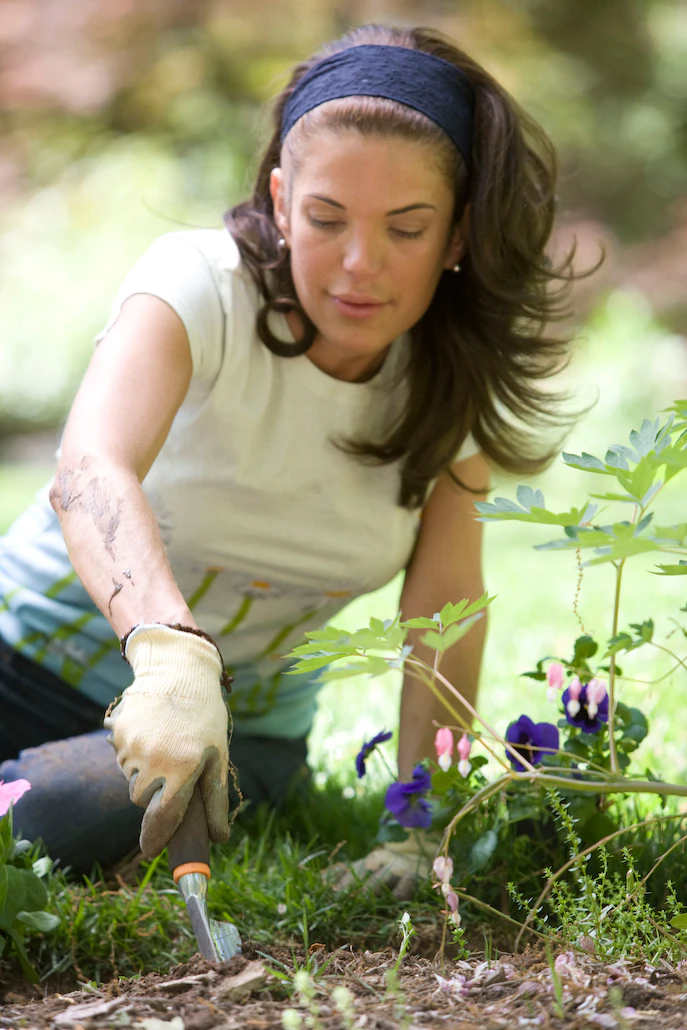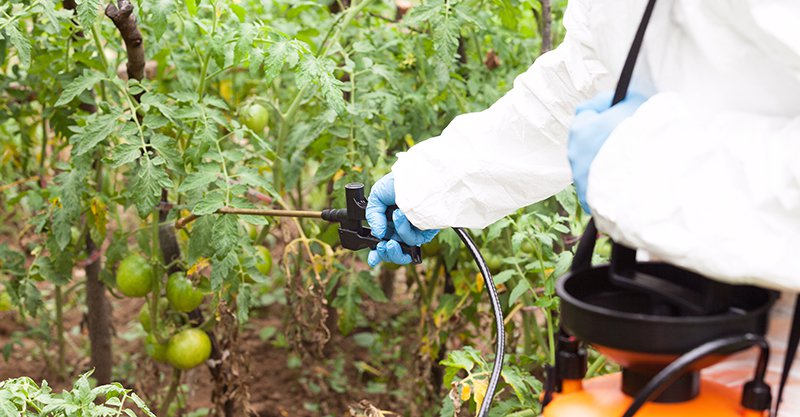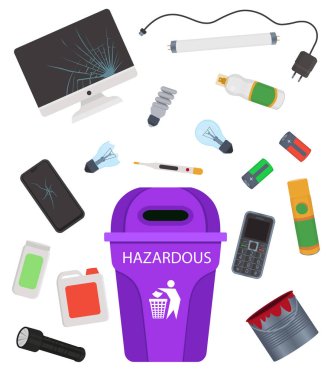Pesticide Pollution Prevention Methods

The State of California has regulations in place to protect water quality in the Sacramento and San Joaquin River watersheds. The regulations focus on managing pesticide use to prevent harm to aquatic life in our streams and rivers. Such aquatic organisms include fish, reptiles, amphibians, crayfish, mussels, mollusks, and crustaceans.
Any chemicals used in our yard and gardens can be washed off directly into streams and rivers. It is best to use less toxic pesticides or other means of controlling unwanted pests, rather than harmful pesticides. The UC IPM provides more information about how pesticides are affecting water quality and how pesticides get into our streams and rivers.
As part of this effort, this website provides information about pesticides, less toxic alternatives to control pests, and integrated pest management for residents and businesses. Small changes made around your home or business—something as simple as not spraying a pesticide on a windy day or addressing a pest issue without using pesticides—can make a big difference in our local water quality.
Look for the TAKE ACTION! items to see how you can make a difference.

Pesticides and herbicides are used to control unwanted bugs and plants (“pests”) such as insects (ants, wasps), rodents (mice, rats), weeds, or other unwanted organisms. Although efficient, even when used correctly, these chemicals can cause harm to human health or have negative consequences within the environment. It is important to consider less toxic or other alternatives and always follow label instructions when pesticide applications are needed.
TAKE ACTION! Read the label of the pesticide you are thinking about purchasing and select the pesticide carefully. Ensure that it is appropriate for the pest and determine where you will use it. Learn more about how to read a pesticide label and what to look for while reading a pesticide label. The EPA offers information on common questions and answers about pesticide labels.
In California, pesticides are regulated by the Department of Pesticide Regulation (DPR) as well as by the United States Environmental Protection Agency (USEPA). To learn more about why pesticides can be harmful and how they are regulated, visit the following websites:
![Insect Repellent Label. The label says: Active Ingredient: Permethrin: [*3-Phenoxyphenly) methyl (±) cis/trans 3-(2,2-dichloroethenyl)-2,2-dimethylcycloporopanecarboxylate] - 2.5%. Other Ingredients - 97.5%. Total 100.0%. *cis/trans isomer ratio: Min 35% (±) cis Max 65% (± trans. It then provides a warning to Keep out of reach of children. Caution See Booklet For Additional Precautionary Statements](/publicworks/pesticides/images/pesticide_label.jpg)
Although there are many different types of pesticides, one group of pesticides, called pyrethroids, is of particular concern because they are being found in our local waterways. Pyrethroid pesticides are primarily used for ants, cockroaches, and other insects. However, it takes them a long time to break down into less harmful components once they’re in the environment, which means that they can cause unintended harm to many other types of beneficial insects (e.g., bees, ladybugs) and aquatic life.
TAKE ACTION! Products that contain pyrethroids typically have active ingredients that end with the letters “-thrin.” When reading the pesticide label, look to see if any of the active ingredients include the following:
- Permethrin
- Bifenthrin
- Cyfluthrin
- Beta-Cyfluthrin
- Cypermethrin
- Deltamethrin
- Lambda-cyhalothrin
- Tralomethrin
- Esfenvalerate (an exception to the "-thrin" rule)
If a pyrethroid is an active ingredient, consider other ways that you might address the pest, such as other less toxic pesticides or controls that do not require the use of a pesticide.
To learn more, visit Our Water – Our World: Pesticides and Water Quality.
“Point-of-purchase” or “point-of-sale” campaigns are focused efforts to educate and raise awareness among both retailers and consumers so that they can make informed decisions about what types of products are available for sale (retailers) and what products are most effective, least harmful, and ultimately purchased (consumers). Point-of-purchase displays often include materials such as shelf edging or tags and display stands with fact sheets, banners, and other educational materials Our Water Our World (OWOW) is an example of an established point-of-purchase program that is implemented in retail stores that sell pest control products in northern California.
TAKE ACTION! Next time you visit your local gardening and home supply retailer, look for displays and educational materials about pesticides and which controls are best for each type of pest that you may encounter. Find stores near you that participate in the OWOW program.
Information for Residents

Unwanted insects in your lawn, garden, or home can be a source of frustration and damage the plants that you are trying to grow and maintain. Some pests can also potentially transmit disease. In order to effectively prevent or remove these pests, it is important to understand what is attracting them, how they are entering the home or garden, and what control is best for that specific pest. Approaching pests in this manner will save money, have a longer-lasting effect on the pest, and protect the environment.
TAKE ACTION! The next time you need to address a pest in your home or garden, follow the steps below.
Identify if the Bug is Good or Bad
Check if the bug you are seeing is a beneficial insect that eats the “bad” bugs and pollinates your plants. Visit Our Water Our World (OWOW) to identify typical beneficial insects or see"The 10 Most Wanted Bugs in Your Garden".
- Identify What Controls are best for your pest
- English: Ants | En Español: Hormigas
- English: Aphids | En Español: Ãfidos o pulgones
- English: Bed Bugs | En Español: Chinches
- English: Cockroaches | En Español: Cucarachas
- English: Fleas | En Español: Pulgas
- English: Moles, Voles, Gophers | En Español: Tuzas
- English: Mosquitoes | En Español: Mosquitos
- English: Rats and Mice | En Español: Ratas y Ratones
- English: Snails and Slugs | En Español: Caracoles y Babosas
- English: Spiders | En Español: Arañas
- English: Yellow Jackets | En Español: Avispas chaqueta amarilla
- Consider No or Less Toxic Alternatives
- If you must use pesticides - follow these best practices
- Read labels and apply pesticides using recommended amounts and application methods.
- Use the least amount of chemical needed. Remember, more is not always better.
- Avoid application when it is windy or before it rains.
- Don’t overwater the area immediately after pesticide application. Excess water will carry the chemicals straight to the storm drain system and then to the local streams and rivers.
- Take care not to spill the product, and don’t rinse spills into the street. If a spill occurs, absorb it with sawdust or kitty litter, sweep the absorbent material into a paper bag, and take absorbent material to your local hazardous waste collection facility. You may also contact your County Agricultural Commissioner or the County Office of Environmental Health to ask how to dispose of the bagged absorbent material.
The OWOW partnership and the UC integrated Pest Management Program have detailed information that can help you determine the best method to control your pest
First, try control pests with less toxic methods, such as traps, mulch, insecticidal soap, or beneficial insects like ladybugs. To learn more about less toxic pest management methods and products, visit the OWOW partnership or University of California.
If you have pesticides (liquid or solid) that you no longer need, they must be disposed of properly so that they do not harm you or the environment. Any leftover pesticides must be taken to your local household hazardous waste (HHW) facility. You can find your nearest HHW location by calling the California Environmental Hotline (1-800-253-2687). Residents may only dispose of empty pesticide containers in the trash without rinsing them.
TAKE ACTION! Take your unused pesticides to the Stanislaus County Morgan Road Household Hazardous Waste Collection Facility.
TAKE ACTION! Any amount of unused pesticide must be disposed of at your local household hazardous waste facility or event. Regardless of what the label may say, it is illegal in California to dispose of any amount of pesticide in the trash. To properly dispose of your unused chemicals, take them to the Stanislaus County Morgan Road Household Hazardous Waste Collection Facility (1710 Morgan Road, Modesto, CA 95358). This facility is open to the public, free of charge on Fridays and Saturdays from 8 AM – 12 PM from September through May and Fridays and Saturdays from 7:30 AM – 11:30 AM from June through August. For more information, call the County Information Hotline at (209) 525-6789, visit the Stanislaus County Household Hazardous Waste Program webpage, or stay up to date with the Household Hazardous Waste flyer.
Stanislaus County
Morgan Road Household Hazardous Waste Collection
Address: 1710 Morgan Road, Modesto, CA 95358
Phone: 209-525-6789
Information for Residents and Businesses

When dealing with unwanted pests around your home or business, you may want to hire a pest control service to take care of the problem for you. Pest control professionals have access to different products, specialized training, and other equipment that may be needed in order to manage a serious infestation or problem.
Pest management professionals can learn more about integrated pest management approaches and available training by visiting the UC IPM Program for structural pest management or landscape pest management.
TAKE ACTION! By following these steps, you can support pest control companies that understand and implement integrated pest management and less toxic approaches.
- Do some research about the pest you have and how it can be controlled
- Ensure the pest control operator has a license issued by the California State Structural Pest Control Board and any other registrations, certifications, or insurance required. To verify the license for a pest control operator, visit the Department for Consumer Affairs.
- Hire a pest control operator who is certified as using integrated pest management practices, applies effective non-chemical strategies first, and knows how to effectively manage pests. Questions to ask a pest control company and things to consider can be found on the OWOW and UC IPM websites. Several certification groups can also be helpful in finding a pest control company:

Proper design and management of the landscaping around our homes and businesses can help prevent pesticide runoff from these areas into local waterbodies. Ways to reduce your landscaping irrigation needs and keep irrigation water onsite can be found at CA Dept. of Water Resources and Save our Water. Discover county-specific tips by using the UC Seasonal Landscape IPM Checklist.
TAKE ACTION! Slow the flow by following the University of California’s Statewide Integrated Pest Management Program recommendations for pesticide-smart landscape design:
- Help water soak into the ground
- Use stones, pavers, gravel, mulch, or other materials that allow water to soak into the ground in areas where you don’t have plants
- Aerate your soil and use organic material, like compost, as well as perforated drainage lines, to reduce areas of water pooling in your landscaping
- Create landscape features to collect runoff water
- Consider using trees, rain gardens, terrace walls, rain barrels, or swales (long, shallow, grassy depressions) to hold water within the landscaped area and allow it to soak into the ground rather than draining directly to our surface waterbodies
- Consider using river-friendly gardening approaches such as selecting appropriate plants, minimizing the use of chemical pesticides, and creating "hydrozones" by grouping plants according to water needs. Learn more about how to make your yard river-friendly on the Lodi Watershed Friendly Landscaping website or by following these River-Friendly Landscape Guidelines
- Install and properly operate irrigation systems and equipment
- Make sure your irrigation equipment is working properly by regularly inspecting it and consider installing a “smart” irrigation controller to reduce overwatering
Contact Us
Stanislaus County - Public Works Department
1716 Morgan Rd.
Modesto, CA 95358
209-525-4130
Subscribe to the E-Newsletter
The Stanislaus Sprout e-newsletters contain pesticide-related information for residents and business owners. To have the e-newsletter delivered straight to your inbox: Subscribe to The Stanislaus Sprout to have the e-newsletter delivered straight to your inbox.
E-Newsletter Archive
View the archive of e-newsletters to learn more about integrated pest management, less-toxic alternatives, and pesticide use and disposal at The Stanislaus Sprout - Agriculture and Natural Resources Blogs (ucanr.edu)




